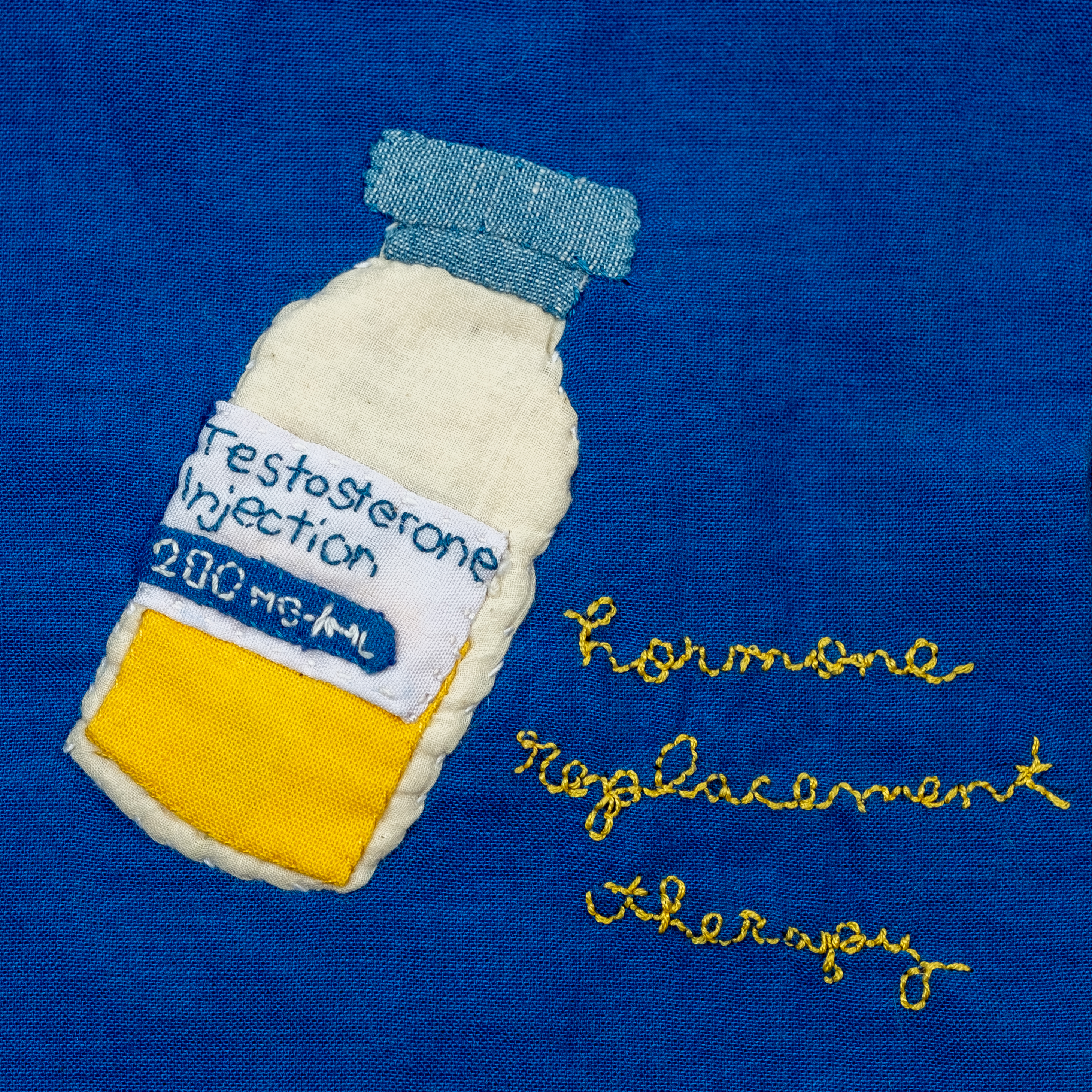
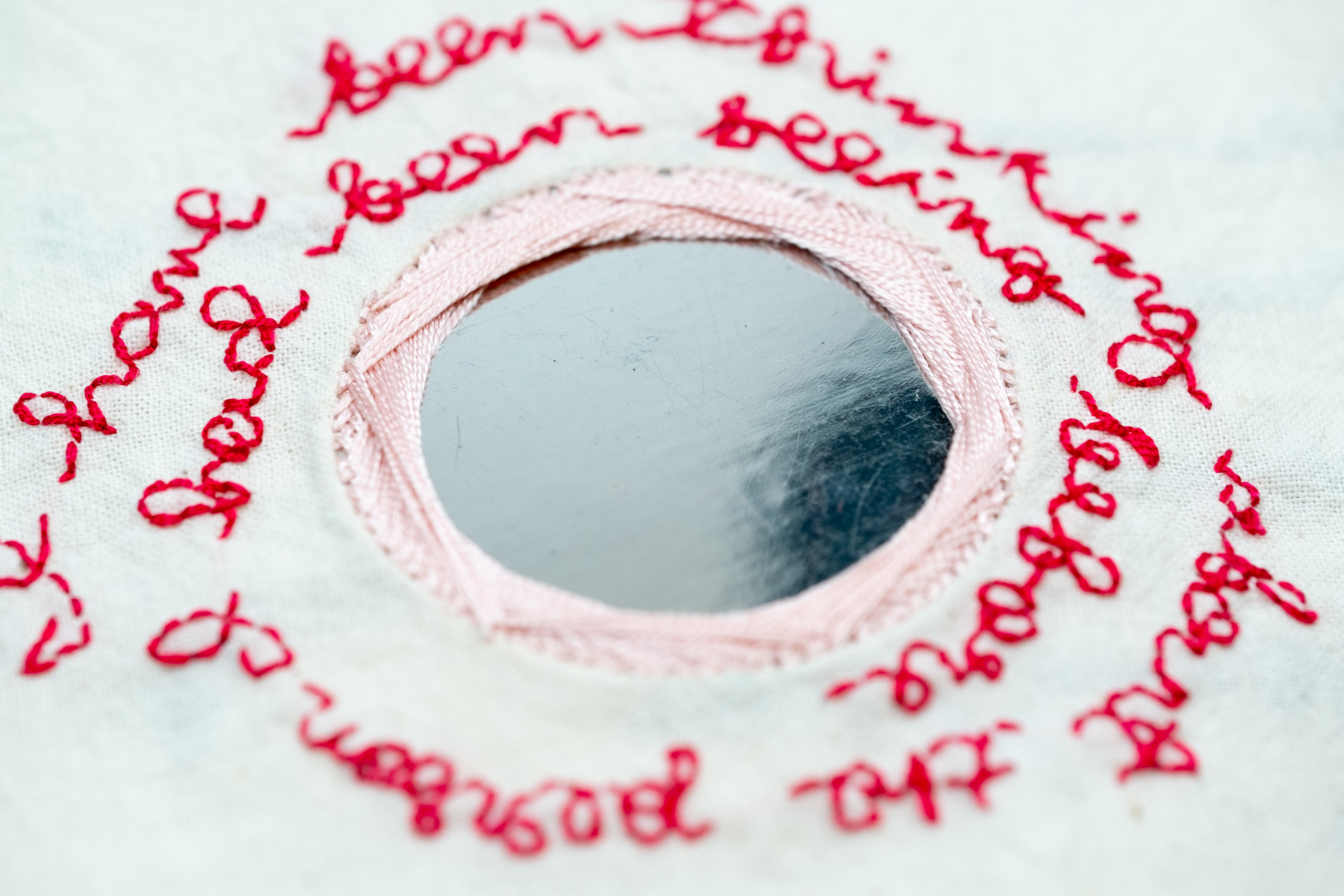
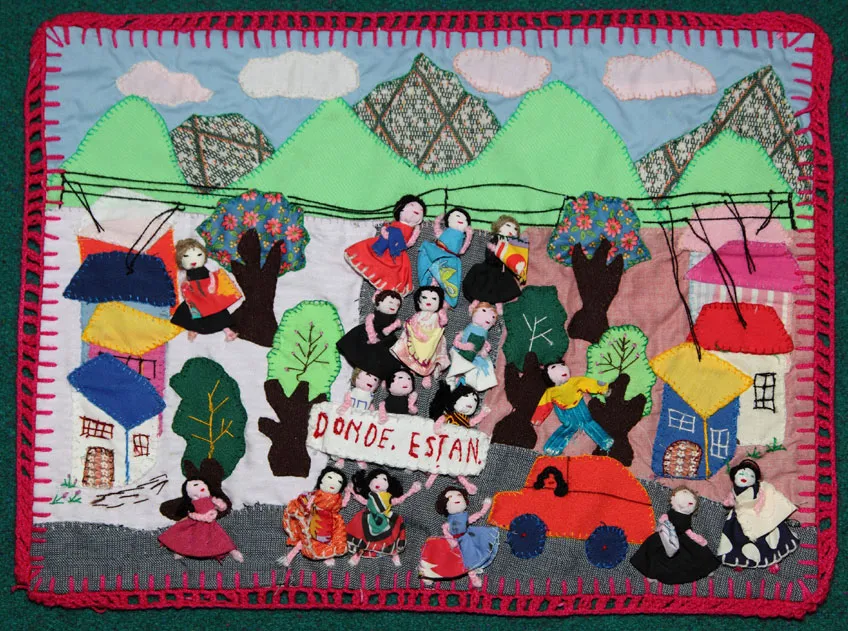

ACTIVITY
In 1895 the last reigning monarch of the Kingdom of Hawai’i, Queen Lili’uokalani, was imprisoned in ‘Iolani palace. Using scraps of silk from her own clothing and that of the women imprisoned with her, she created a 97” by 96” crazy quilt embroidered with symbols, dates, and names which symbolized her kingdom, her people, and her resilience.
Throughout history and around the world, people have used embroidery to record and process the abuses and inequities of the systems of power which seek to silence and erase them. In Subversive Embroidery, textile artist and researcher Elliot Rockart will discuss how embroidery has been used as a subversive act. They will show examples from their own art as well as historical examples from the imprisonment of Mary Queen of Scots to the stitchers of the Keiskamma Guernica during the AIDS crisis in South Africa. Students will learn basic and intermediate embroidery stitches, and engage in collaborative discussions to generate ideas to use embroidery in their own subversive practice.
Date
Saturday, February 22nd, 2025
Time
12 pm – 4 pm ET
Location
Tatter Textile Library
505 Carroll Street, 2B
Brooklyn, NY 11215
BLUE, The TATTER Textile Library is located in Gowanus, Brooklyn. Serving as both an interactive, ongoing art installation as well as an academic research library, BLUE is an ever-growing home to 6,000 books, journals, exhibition catalogs, and objects that examine and celebrate the global history, traditions, makers, craft and beauty of textiles.
Cost
$100
Materials
All class supplies will be provided. Participants are welcome to bring any materials they might be interested in experimenting with. All class supplies will be provided. Participants are welcome to bring any materials they might be interested in experimenting with.
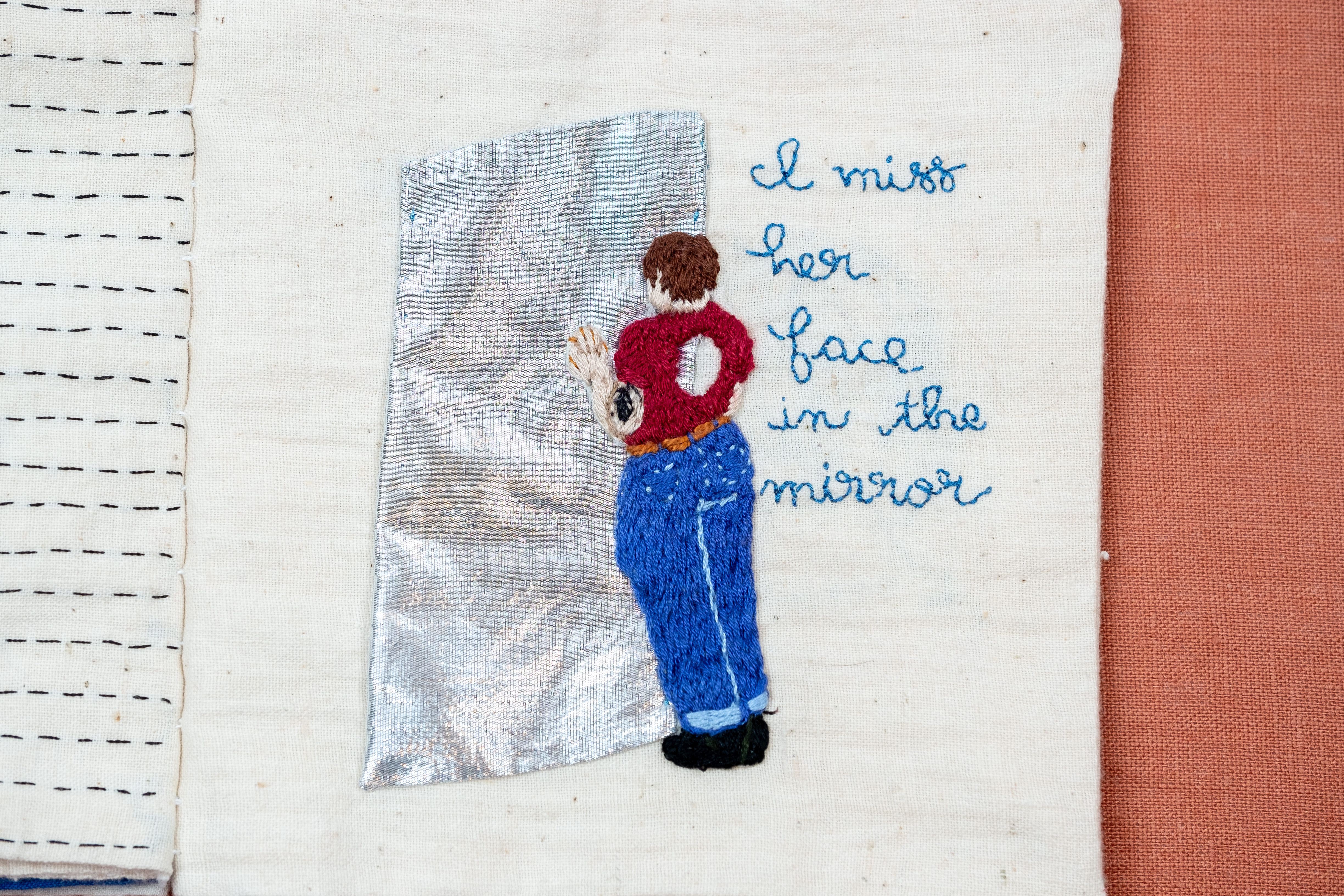
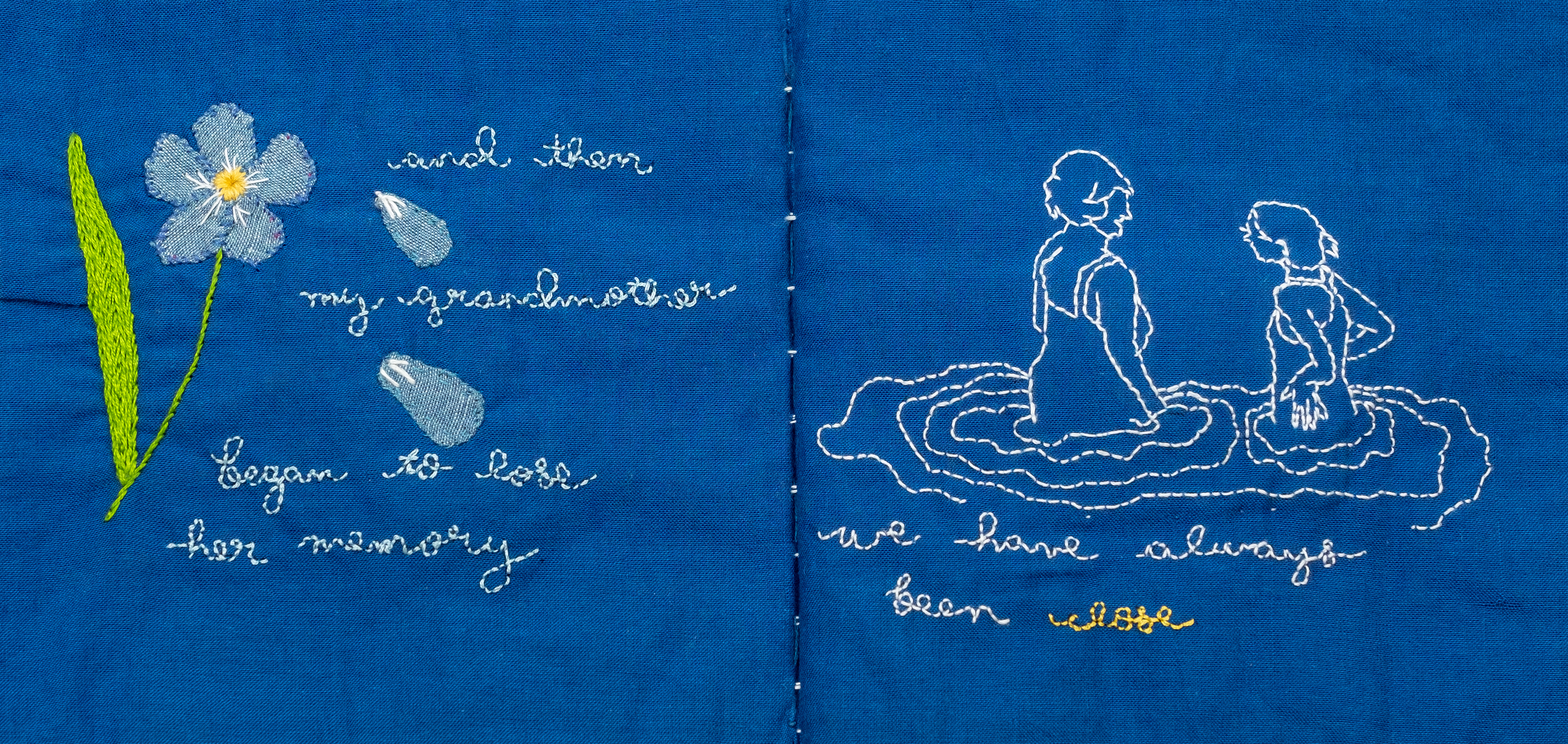
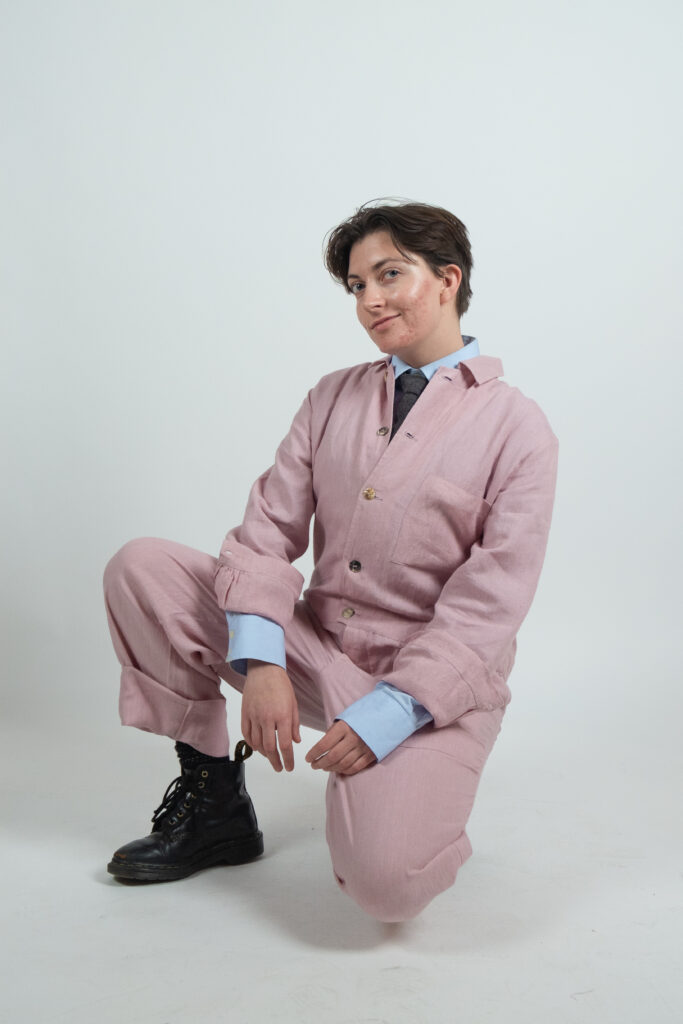
Our Teacher
Elliot Rockart is a nonbinary textile artist, writer, and researcher located in Brooklyn, New York. They combine their love of history and textiles through creating historically inspired knitted, crocheted, embroidered, sewn, woven, hooked, spun, tatted, and appliquéd art. Through this hands-on approach to history, they seek to understand through embodiment the lived experiences of people and collectives who have created textiles across history. Today, their work is primarily inspired by the history of material culture and their own process of medically and socially transitioning as a transmasculine person.
